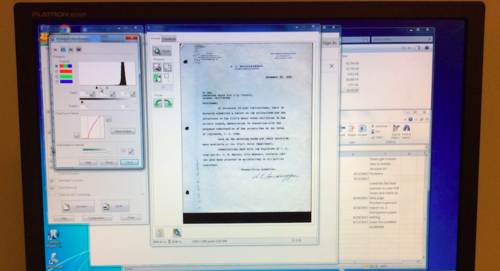Greetings, California water resources enthusiasts! This week I scanned Bernard A. Etcheverry and H. L. Haehl’s “Report on Conservation of Controlled Flood Water of San Gabriel River (With Index to Spreading Studies)” (1936). That the index was noteworthy enough to include in the title intrigued me (I am easily intrigued). It lists related documents from the Los Angeles County Flood Control District, with a “distinguishing letter, a Roman file number and an Arabic exhibit number” for each entry.


Whether a titular index was standard procedure or rarity in the pre-Internet days of government reports, I know not. The thoroughness of the authors’ index-craft is, to be sure, impressive. As I digitize subsequent documents I will be sure to keep an eye out for more occurrences of this mysterious phenomenon.















